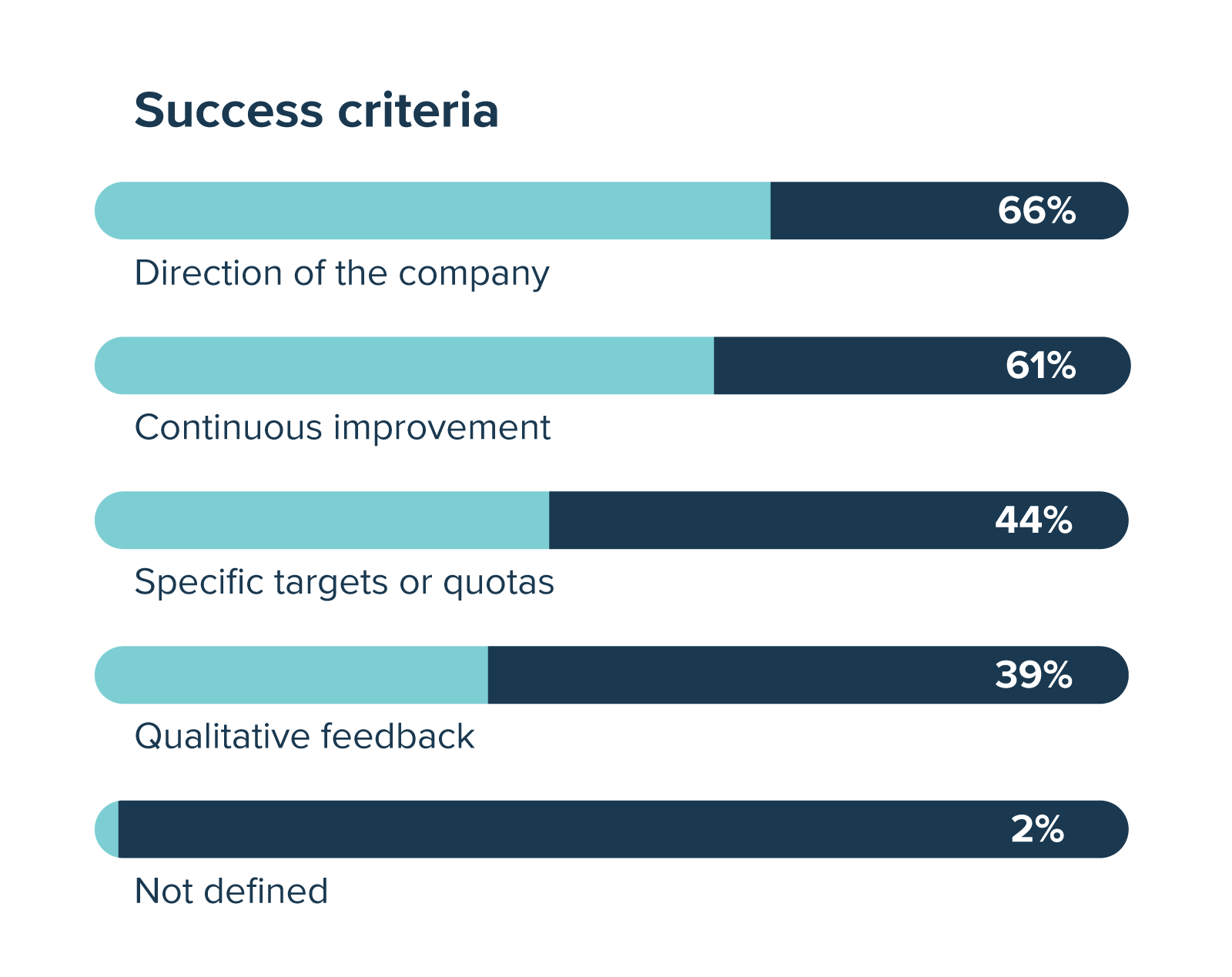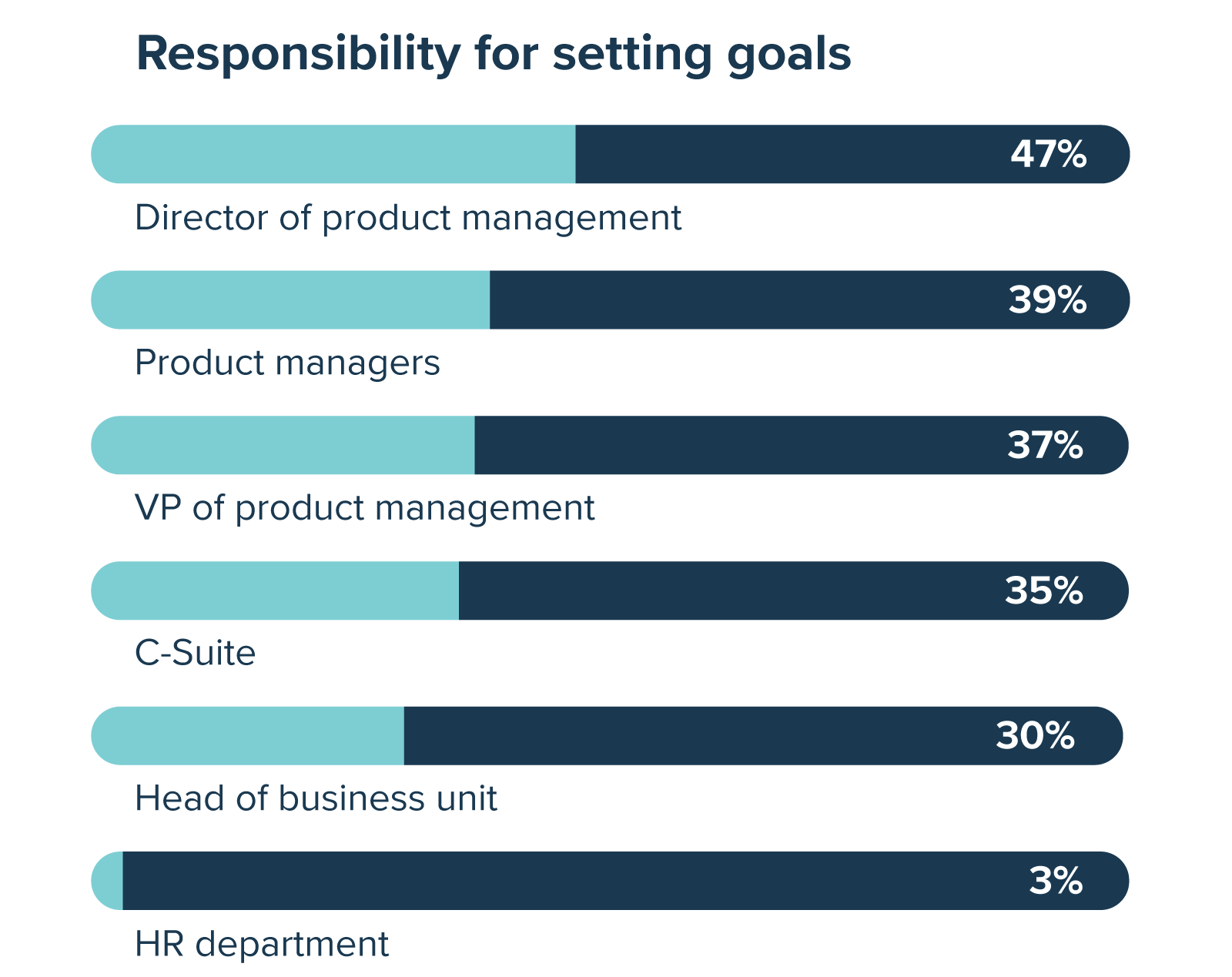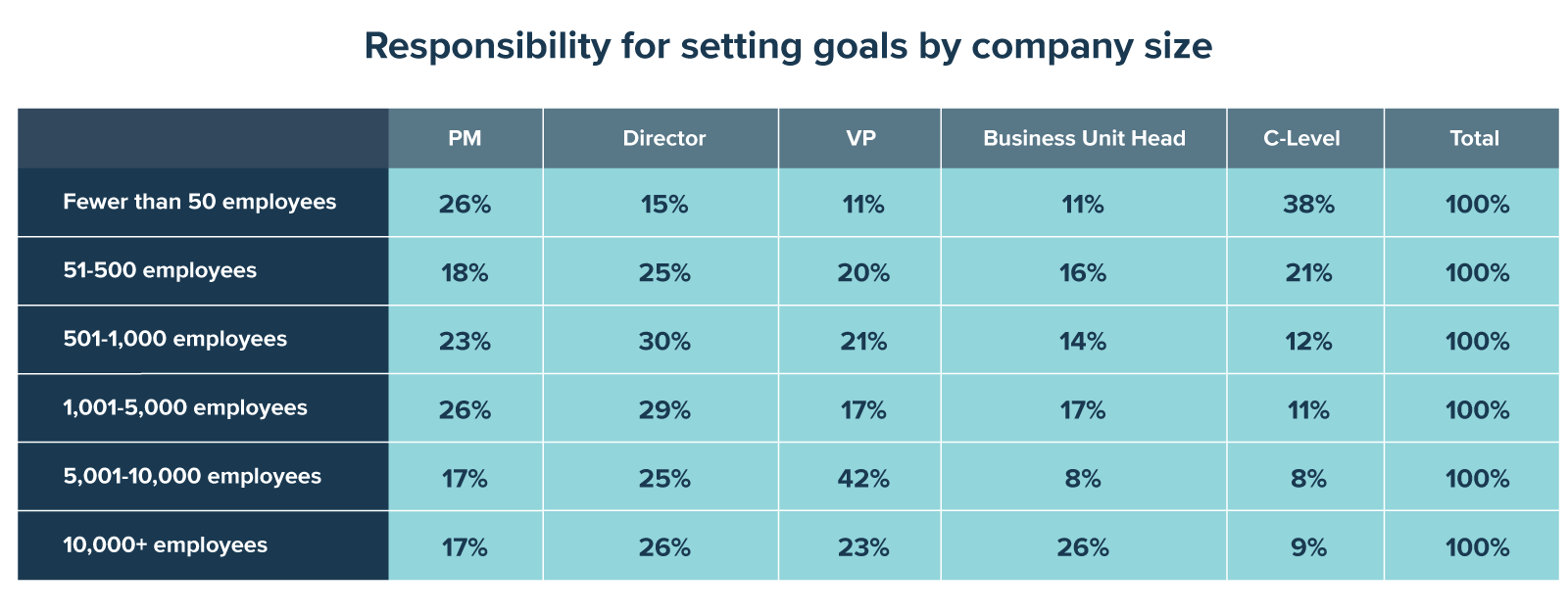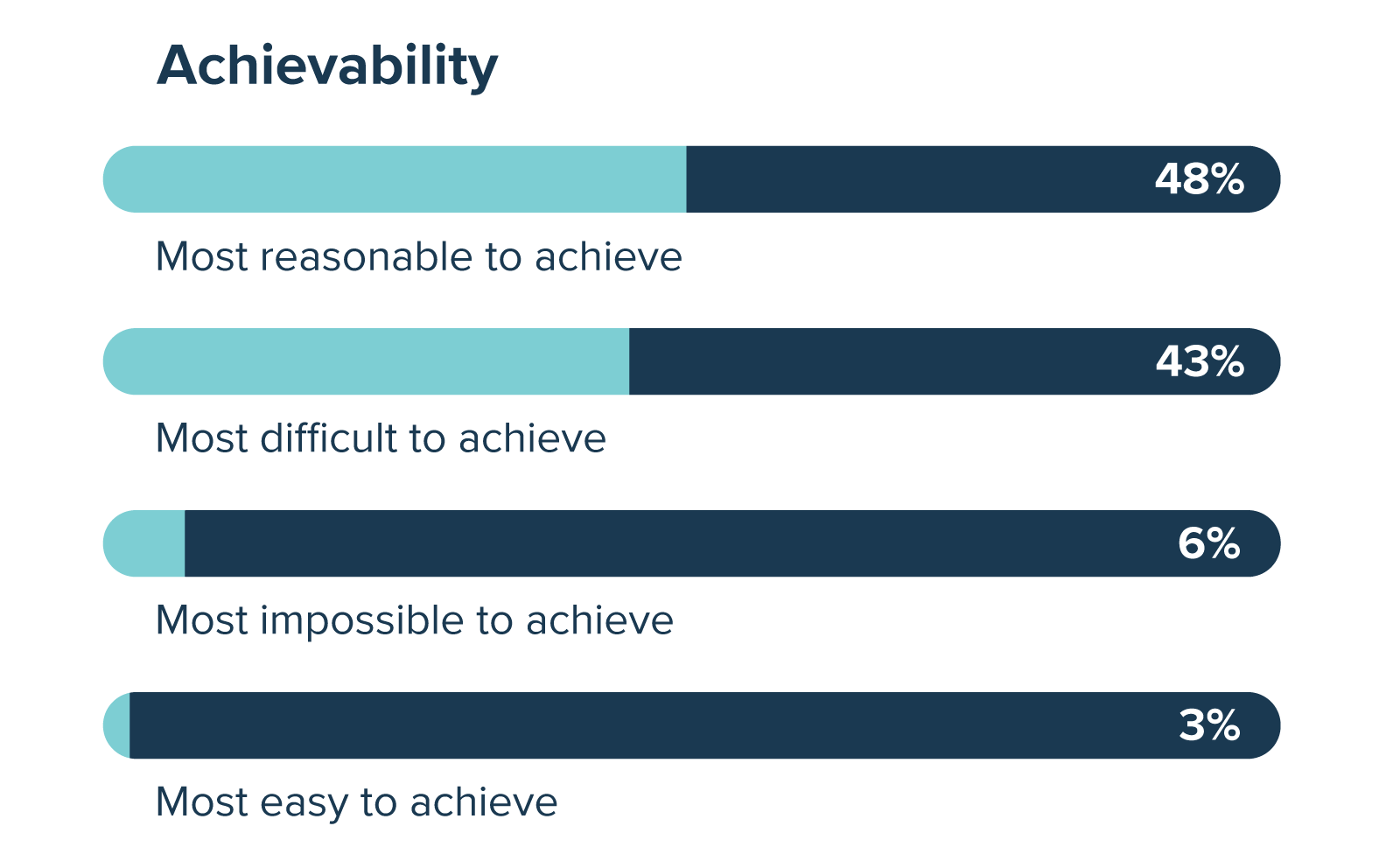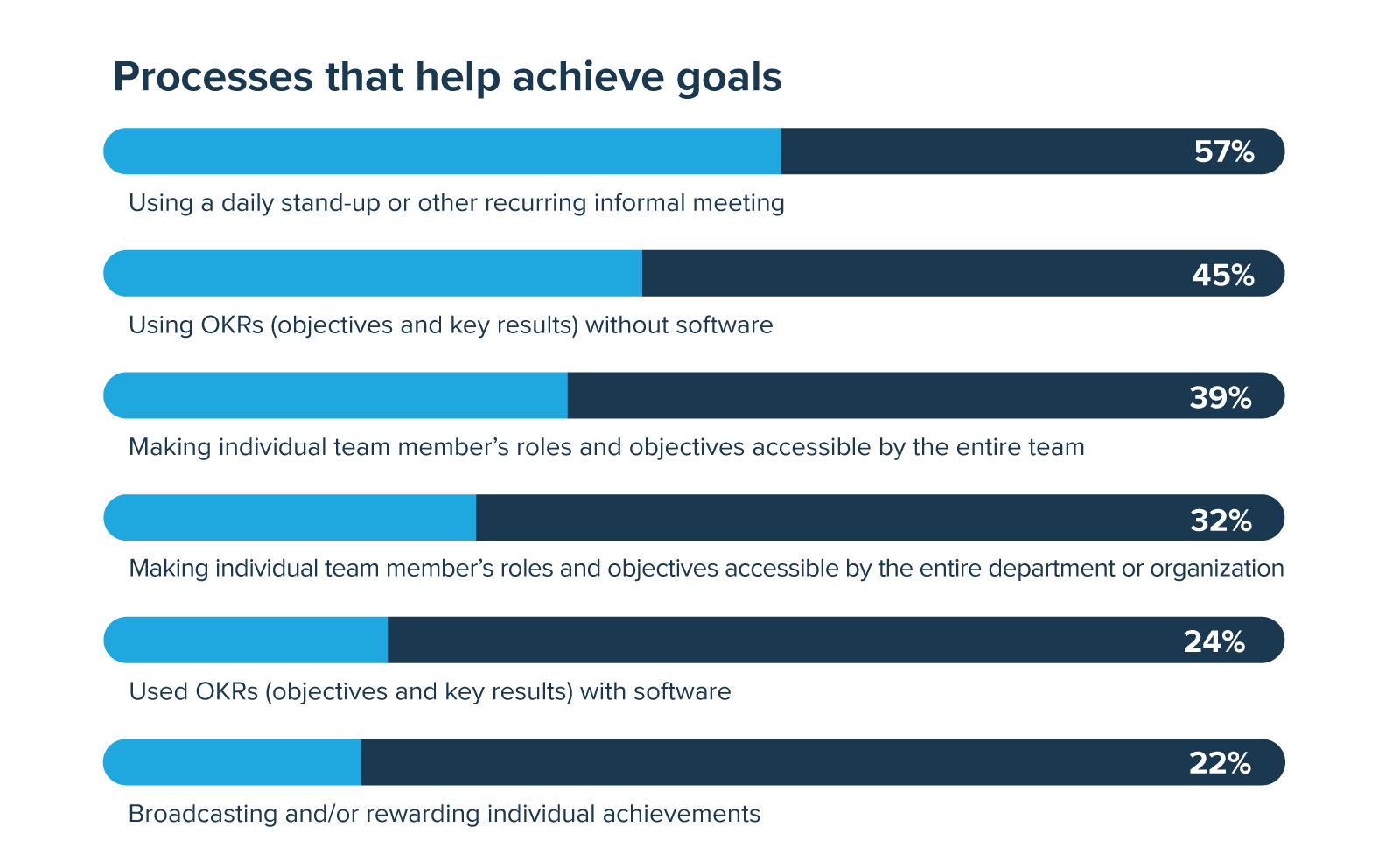How Product Teams Set Goals – Product Management Insider – Medium
What we learned from our survey of 164 Product Managers

Goals align teams on a common strategy and motivate everyone to achieve mission-critical objectives. Goal setting is a common practice for product teams at companies of all sizes and industries.
However, best practices for setting and achieving these goals are far from uniform, and they are constantly evolving. We surveyed 164 product managers to discover how they set goals, the techniques and processes that help them achieve them, and the challenges that they face in setting and achieving goals.
This article covers three of the major findings form the study and insights on where product managers have room to grow. Download the full “Product Management Goals Report” here.
1. Product teams strive for continuous improvement
Qualitative and quantitative user research are becoming more prevalent in the field of product management. While we found that product teams are more often accountable for the the general direction of the company and the evolution of these trends over time, less than half of product managers have well-defined targets and quotas for which they are held accountable.
Continuous improvement was the second most common success criteria. Given the increased adoption of agile development workflows, it’s promising to see that goal-setting is aligned.
2. Product managers need a seat at the table
Many product managers describe their role as “The CEO of the Product”. At many companies, particularly startups, product managers are in fact responsible for all aspects of the product, from the vision to the bottom line. However, in an article on Mind the Product, Martin Eriksson argued that “unless you’re the founder and the product manager at the same time, you are not the CEO of anything.”
Our data supports Eriksson’s claim. Fewer than 30% of product managers in organizations of any size report having primary responsibility for setting goals. Product managers largely defer goal setting to executives and other more senior members of the team.
A more nuanced picture emerges we segmented goal-setting responsibility by company size. Product managers and the C-Suite tend to have more important roles at smaller companies, while VPs and Directors of Product Management are more influential for goal-setting at larger companies.
As a company grows, goal-setting also grows in importance as the need for a shared vision increases and collaboration becomes more challenging. This observed trend makes sense, but it suggests that product managers are abdicating an important responsibility, especially in larger organizations. Perhaps due to a relatively insufficient role in goal setting, less than half of respondents think that their goals were reasonably achievable.
Despite the lack of participation and achievability, 67% of the product managers surveyed said that their goals are relevant and worthwhile. Nonetheless, we believe product managers have critical insights about users and the product, and should make more significant contributions to the goal-setting process.
3. Daily stand-ups improve alignment
Setting goals is motivating, but it’s the easy part of the process. Accomplishing goals is the hard part. To do so, product managers need to align the team and keep key stakeholders informed.
The product managers that we surveyed implemented daily standups and objectives and key results (OKRs) to improve communication and alignment.
Our respondents indicated that agile development processes and generating user insights most contributed to their ability to achieve their goals.
Moving forward
Product managers have been making important strides with regards to conducting quantitative and qualitative user research and implementing agile workflows geared towards achieving continuous improvement. However, there’s room for product managers to make a more significant contribution to setting goals. Instead of relying on executive mandate, product managers can leverage their deep insights about users and the product to help set meaningful goals.
For more insights and best practices, download the full 11-page Product Management Goals report here.


